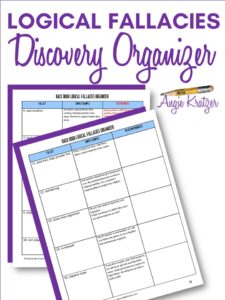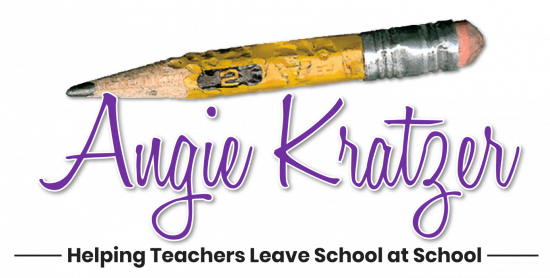
The ability to recognize fake news requires a complex skill set. The brain has to develop a fine filter that can sift through sponsored content that doesn’t look sponsored, bias that disguises itself as balance, and interpretation that looks like facts. For an educated, rational adult, this filter is at work. For a hormonal, irrational teenager who thinks “reality television” is reality, there is no screen. If it’s online, it must be true. As teachers, we have to help our students develop that filter, that ability to evaluate quickly whether an article in worth reading, much less believing. They need to recognize these five types of tricky “news” as described on CNN.com:
Fake news
These are the easiest to debunk and often come from known sham sites that are designed to look like real news outlets. They may include misleading photographs and headlines that, at first read, sound like they could be real.
Misleading News
These are the hardest to debunk because they often contain a kernel of truth: A fact, event or quote that has been taken out of context. Look for sensational headlines that aren’t supported by the information in the article.
Highly Partisan News
A type of misleading news, this may be an interpretation of a real news event where the facts are manipulated to fit an agenda.
Clickbait
The shocking or teasing headlines of these stories trick you into clicking for more information — which may or may not live up to what was promised.
Satire
This one is tough because satire doesn’t pretend to be real and serves a purpose as commentary or entertainment. But if people are not familiar with a satire site, they can share the news as if it is legitimate.
Those five types could be lesson plans in and of themselves, but a more scaffolded approach might be needed. This series of twelve lessons will prep students with the language of fake news before focusing on the motives of its creators.
Lesson 1: Frontload the terminology.
Start with an overview of terms. Your students need to know what “sponsored content” means so that when they see an ad that’s laid out like an article, they’ll recognize the deception. They should know what reliability and bias are before you teach them how filter for them.
Lesson 2: Dig into headlines.
You can have a lot of fun with this lesson. Give students a collection of website URLs with a wide range of political leanings and have them pick apart the language of the headlines. The low hanging fruit will be far right sites like Breitbart.com and AmericanNews.com, but the far left is just as guilty. Send students to MSNBC.com and pfaw.org.
Lesson 3: Learn to spot spin.
Have students compare and contrast how different outlets present and interpret facts. Choose one issue—like President Trump’s response to Covid-19 or the NFL “taking a knee” controversy—and have students read two different accounts of the same event or issue. Have them plow through opinion to get to the facts.
Lesson 4: Study satire.
This lesson just might be the students’ favorite. Some of these sites may be blocked by your school district, and even if they’re not, you might want to print out what you show students. Some satire is glaringly obvious, but the really subtle stuff is what can sneak up on a naïve reader. Check out these six websites as you plan this lesson:
Lesson 5: Focus on reliability and bias.
Ad Fontes Media’s bias chart is by far one of the best resources out there for evaluating the reliability and bias of news outlets. On the Y axis, sources’ reliability is assessed. The higher the source is on the axis, the more reliable it is. It scales up from fabricated information to original fact reporting. On the X axis, a source’s bias is evaluated. A score of 0 is the ideal, an indication of neutrality. Negative numbers indicate liberal bias, and positive numbers indicate conservative bias. There’s even a handy dandy indication set of dotted lines around sets of outlets indicating which ones should be avoided and which can be trusted.
Lesson 6: Take a look at loaded language and faulty reasoning.
Students are bombarded with charged diction, so teaching them to recognize it is a must. A more challenging skill set to teach is the recognition of logical fallacies, but that has to happen too.
Lesson 7: Learn to spot deep fakes and Photoshop deception.
These two tricks are SO CHALLENGING for our students, but even our babes with developing frontal lobes can learn to look for body language, shadows, skin tone changes, and tell-tale photo doctoring evidence.
Lesson 8: Recognize Bots and Trolls
Russian bots and trolls with nothing better to do can swing an argument with false information. Students need to be able to spot them.
Lesson 9: Know when manipulation is happening.
Students will watch and analyze the Netflix film The Social Dilemma.
Lesson 10: Get a handle on fact checking and source tracking.
Anyone on Facebook knows this fact: Users share fake news EVERY DAY and often do not take the time to make sure that what they are spreading is factual. Teach students how to fact check what they are seeing and look for the original source of the information to make decisions about veracity.
Lesson 11: Know thy context.
Whether it’s one line from a speech, one quote from a one-hour interview, or one vote in a thirty-year career, we’ve all seen single ideas and single actions taken out of context. Show students examples of video clips used in political ads, incomplete tweets, and the use of quotations attributed to the speaker instead of someone the speaker was actually quoting.
Lesson 12: Take it up a notch.
Climb all the way up the rigor ladder with a timely, relevant culminating project that has students create an infographic, create and track a fake news story, or research the consequences of fake news.
FEATURED RESOURCE
If you don’t want to start from scratch, this ten-lesson unit may work for you. It follows the process recommended and includes the needed links and graphic organizers. All materials are on Google Slides as well for easy sharing with students.
Read more about this resource.
Looking for ways to teach logical fallacies? Get this discovery organizer and have students make meaning for themselves.




